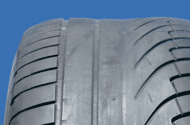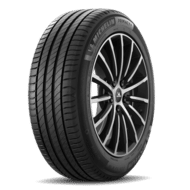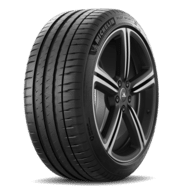
Tips & Advice for Car, SUV & Van tires
Wondering how long should tires last?
Defining the lifespan of a tire is difficult as there are many criteria involved, but by reading this article you will know how to preserve your tires for as long as possible, when it is advisable to have them checked and which tires guarantee the best performance until the last mile.
Why is it important to make tires last ?
There are two main reasons why you should make your tires last as long as their performance allows.
1 - To preserve the environment
By preserving the longevity of your tires, you change them less often, which reduces the impact on our planet.

2 - To avoid unnecessary expenses
Replacing your tires too early means incurring greater expenses than they would otherwise have been. By letting them last until the end, you limit the budget allocated to your vehicle.
How to avoid premature wear of your tires?
A tire is subject to inevitable wear and tear over time and miles, but this can be accelerated if you don't take certain precautions.
Check your tire pressure regularly
Under-inflated tires cause premature tire wear. As a tire naturally loses some air over time, we recommend checking the pressure once a month for fitted tires (and once a year for the spare).
In addition to tire wear, driving on under-inflated tires means extra fuel costs as your vehicle consumes more fuel.
Over-inflated tires are also prone to premature wear. This is why it is important to adjust your tire pressure according to the manufacturer's recommendations.
Know more about how to check tire pressure.

Avoid shocks
When you drive over a kerb, through a hole or over a speed bump, it causes a shock that can accelerate the wear of your tires.
In fact, a shock to one or more tires can cause your vehicle's geometry to go out of alignment. The consequence? Irregular wear of your tires which will require premature replacement.
Store your summer/winter tires properly
If you alternate between summer and winter tires, it is important that your unused tires are stored in a clean, airy place, protected from the weather to preserve them.
Extreme temperatures also affect the ageing of rubber. Instead of exposing them to temperatures that are too hot or too cold, choose a temperate place, away from direct sunlight.

When should you have your tires checked?

If you notice abnormal wear
Do you notice that your tires show more wear on one side of the tread? Only in the centre? Or only on the shoulders of the tire? Do you see repeated facet wear?
Get the tire checked quickly to fix the problem before it gets worse.
From 5 years of use
In 5 years, your tires will probably have been run over many different surfaces and perhaps have suffered shocks. After 5 years of use, have them checked by a professional at least once a year. This will ensure that they have not been damaged prematurely and that they do not endanger you or your passengers.
Tire DOT: how to tell tire age?
Your tires have a « Tire DOT » marking which indicates, by a code, their date of manufacture. This code is made up of 4 digits, the first two designate the week and the next two the year of manufacture. With this information, you can find out whether your tires have passed the 5-year mark or not.

At the end of the tire DOT, the tire age code indicates that it was manufactured in the 47th week of the year 2014
Tire age limit : the 10-year threshold
If the tires have not been replaced 10 years after their date of manufacture, Michelin recommends replacing them with new tires as a precaution. This recommendation also applies to spare tires.
The wear indicator threshold
Legislation states that a tire should be changed when the tread is less than 1.6mm high. This threshold is indicated on your tires by tread indicators, small raised areas between the treads that measure this height precisely.
They indicate that the tire needs to be changed when the tread height has fallen to the level of the wear indicators. On MICHELIN tires, small bumps are visible on the shoulder of the tire to help you locate the wear indicators on the tread.

Choose tires that perform until the last mile
The last mile? That's when your tire's tread will have actually reached the wear indicator threshold.
All MICHELIN ranges are designed to combine an excellent longevity and an excellent level of performance until the last mile.
As an example, with our MICHELIN Primacy4, MICHELIN CrossClimate2 and MICHELIN Alpin6 ranges, we provide drivers with optimum safety right up to the very last mile.
Why do we do this? Because these new generations of tires have an evolving tread pattern that allows the tire to maintain its performance right to the end, even when worn.
They prevent aquaplaning even with heavy wear
To avoid aquaplaning (loss of control when driving on a wet road), water must be stored in the treads of the tire before it is drained off at the rear and sides.
As the tire wears, there are fewer raised treads and therefore fewer places to store water. In this case, the tire rises with a layer of water between the tire and the road. This results in a loss of grip and therefore a loss of stability and control.
Michelin's evolving tread pattern ensures that the tire continues to store and evacuate water correctly until the end of the tire's life, thus avoiding the phenomenon of aquaplaning.
Discover our ranges
All MICHELIN tires benefit from a high longevity and excellent performance till last mile.

MICHELIN PRIMACY 4
Passenger Car

★★★★★
★★★★★
Safe when new, safe when worn.
Outstanding wet braking performance when new and when worn.
View this tyre

MICHELIN PILOT SPORT 4
Passenger Car

★★★★★
★★★★★
Get ready for journeys of sheer driving pleasure in safety, with tires that instinctively translate your decisions onto the road.
View this tyre
Find the right tyre
Enter your vehicle or tyre size
We're searching for your tyre...
Wait few seconds we're processing your photo



